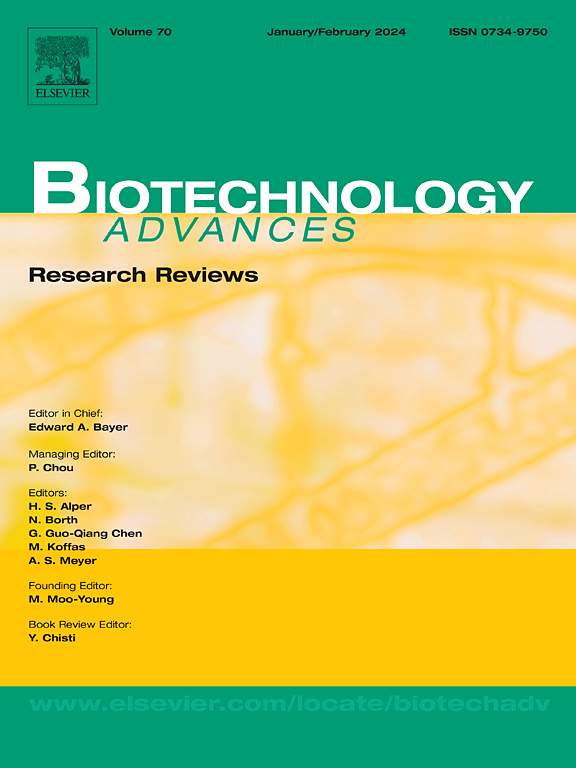谷氨酸棒状杆菌的代谢工程:挖掘其作为生产有机酸的关键细胞工厂平台的潜力。
IF 12.1
1区 工程技术
Q1 BIOTECHNOLOGY & APPLIED MICROBIOLOGY
引用次数: 0
摘要
谷氨酸棒杆菌(Corynebacterium glutamicum)是一种经过深入研究的工业模式微生物,因其生产氨基酸的能力而受到广泛关注。近年来,研究工作越来越集中于探索其生产氨基酸以外的各种有机酸的潜力。有机酸以其酸性官能团为特征,在食品、农业、制药和生物基材料等行业有着广泛的应用。利用代谢工程和合成生物学的进步,谷氨酸酵母的代谢途径已被拓宽,以促进多种高价值有机酸的生产。本综述总结了谷氨酸菌生产氨基酸和其他有机酸的代谢工程的最新进展。值得注意的是,这些酸包括氨基酸(赖氨酸、异亮氨酸和苯丙氨酸)、TCA 循环衍生的有机酸(琥珀酸、α-酮戊二酸)、芳香族有机酸(原儿茶酸、4-氨基-3-羟基苯甲酸、蚁酸酯和对香豆酸)以及其他有机酸(衣康酸和顺式、顺式粘液酸)。本文章由计算机程序翻译,如有差异,请以英文原文为准。
Metabolic engineering of Corynebacterium glutamicum: Unlocking its potential as a key cell factory platform for organic acid production
Corynebacterium glutamicum, a well-studied industrial model microorganism, has garnered widespread attention due to its ability for producing amino acids with a long history. In recent years, research efforts have been increasingly focused on exploring its potential for producing various organic acids beyond amino acids. Organic acids, which are characterized by their acidic functional groups, have diverse applications across industries such as food, agriculture, pharmaceuticals, and biobased materials. Leveraging advancements in metabolic engineering and synthetic biology, the metabolic pathways of C. glutamicum have been broadened to facilitate the production of numerous high-value organic acids. This review summarizes the recent progress in metabolic engineering for the production of both amino acids and other organic acids by C. glutamicum. Notably, these acids include, amino acids (lysine, isoleucine, and phenylalanine), TCA cycle-derived organic acids (succinic acid, α-ketoglutaric acid), aromatic organic acids (protocatechuate, 4-amino-3-hydroxybenzoic acid, anthranilate, and para-coumaric acid), and other organic acids (itaconic acid and cis, cis-muconic acid).
求助全文
通过发布文献求助,成功后即可免费获取论文全文。
去求助
来源期刊

Biotechnology advances
工程技术-生物工程与应用微生物
CiteScore
25.50
自引率
2.50%
发文量
167
审稿时长
37 days
期刊介绍:
Biotechnology Advances is a comprehensive review journal that covers all aspects of the multidisciplinary field of biotechnology. The journal focuses on biotechnology principles and their applications in various industries, agriculture, medicine, environmental concerns, and regulatory issues. It publishes authoritative articles that highlight current developments and future trends in the field of biotechnology. The journal invites submissions of manuscripts that are relevant and appropriate. It targets a wide audience, including scientists, engineers, students, instructors, researchers, practitioners, managers, governments, and other stakeholders in the field. Additionally, special issues are published based on selected presentations from recent relevant conferences in collaboration with the organizations hosting those conferences.
 求助内容:
求助内容: 应助结果提醒方式:
应助结果提醒方式:


